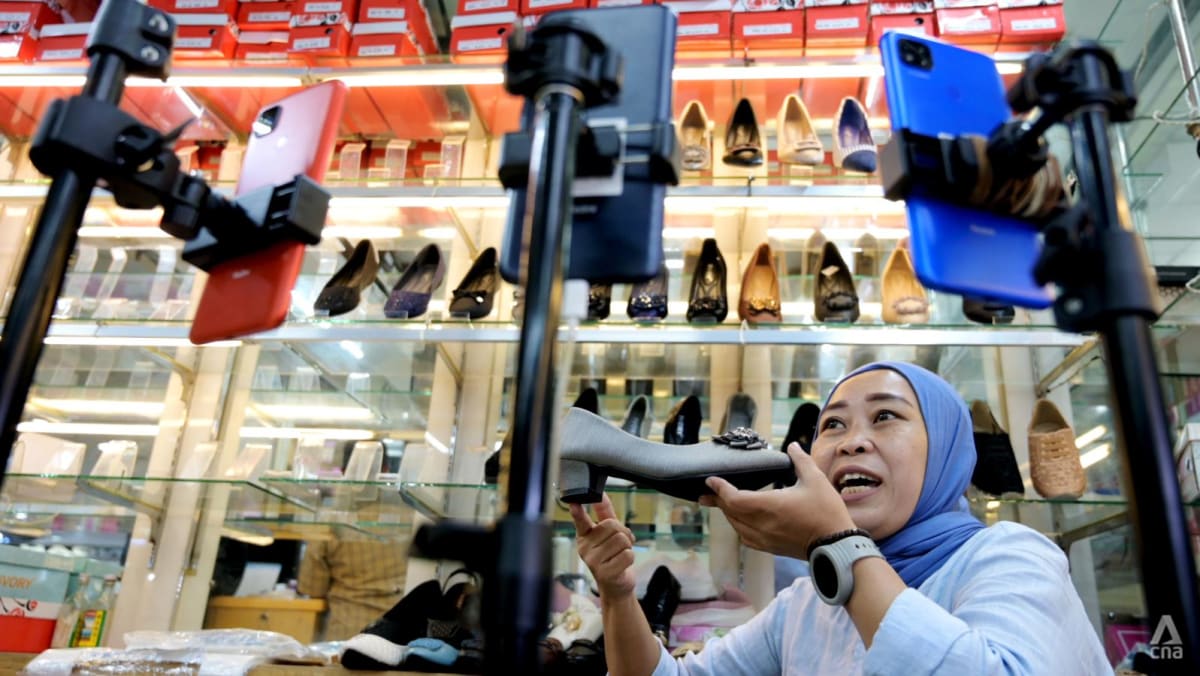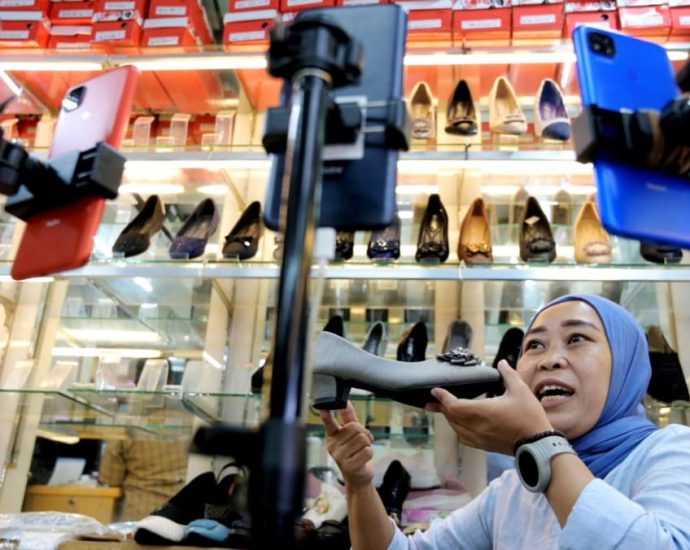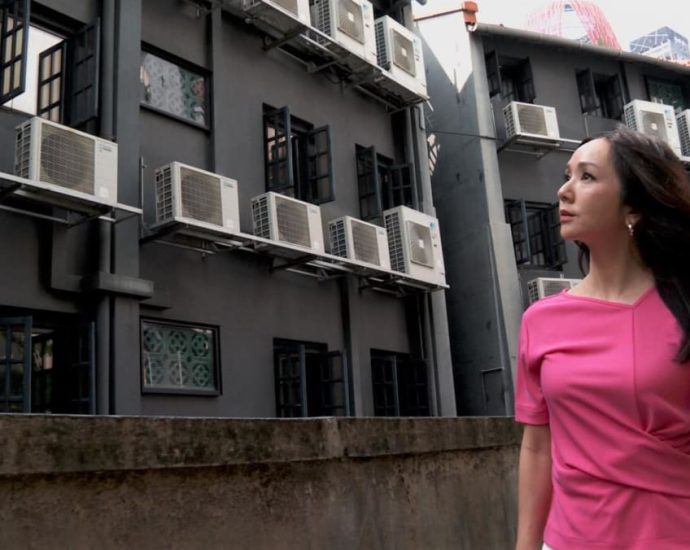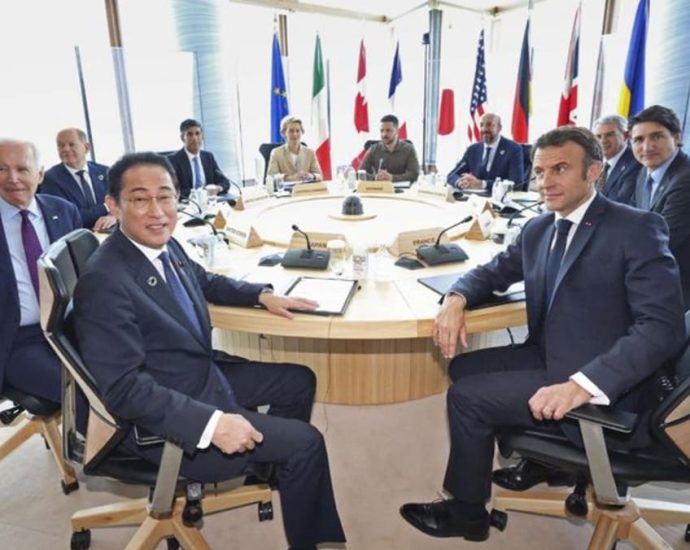MFP predicts PM nod for Pita
Sec-gen says Senate will back their leader

The Move Forward Party (MFP) has expressed confidence its leader Pita Limjaroenrat will receive enough support from senators to become the new prime minister in the crucial vote next Thursday.
MFP secretary-general Chaithawat Tulathon on Friday brushed aside remarks by some senators that they would not vote for Mr Pita as they are concerned about his party’s policies, especially the planned amendment of the lese majeste law.
Some senators who had previously pledged to vote for him have apparently had a change of heart due to the party’s stance on changing Section 112 of the Criminal Code, or the lese majeste law. The MFP has vowed to press for an amendment.
In response, Mr Chaithawat on Friday said: “These are only the opinions of some senators, but most of the senators have not yet expressed their view on the matter.”
He also expressed confidence that the talks between the MFP and senators will deliver a positive outcome, as most senators would want to give the country an opportunity to move forward.
The 250 appointed senators are allowed by the constitution to participate in the vote, along with the 500 elected members of the House of Representatives.
Under the constitution, a PM candidate would need the support of at least half of the 750 members of both the lower and upper chambers of parliament, or 376 votes in total.
The eight coalition parties are said to have secured 312 votes in support of Mr Pita and now need 64 more votes from senators or other MPs to reach that threshold.
Asked if the MFP would back down from its bid to amend Section 112, Mr Chaithawat said that the party could allay the senators’ concerns.
He also said he would ask House Speaker Wan Muhamad Noor Matha if it would be possible for a PM candidate to outline his vision before the vote in parliament and whether members of parliament should also be allowed to quiz the candidate before making their decision.
Asked to comment on what would happen if Mr Pita fails to win in the first round of voting on July 13, Mr Chaithawat said that in that case, the MFP would nominate him again for another vote on July 19.
House Speaker Wan previously said that if Mr Pita fails to secure the votes required to become Thailand’s next prime minister in the House session set for next Thursday, then a second round of voting is likely to be held on July 19.

We may celebrate (Mr Pita’s election as PM) on the evening of July 13 – Chaithawat Tulathon, MFP secretary-general.
However, Mr Chaithawat said he believed Mr Pita would win in the first round and emerge as the new prime minister.
“We may celebrate [Mr Pita’s election as a new PM] on the evening of July 13,” Mr Chaithawat said.
“But if the voting for a new premier drags on for several rounds, then the formation of a new government would also be delayed.
“This may also affect deliberations on the 2024 fiscal budget as well as the economy. Investors will have to suspend investment as they have to assess the situation.
“The faster everything is completed, the better, so Thai politics will stabilise,” Mr Chaithawat said.
Asked if the MFP would support a PM candidate from Pheu Thai if Mr Pita fails, Mr Chaithawat insisted that Mr Pita is the only PM candidate nominated by the eight coalition parties.
The MFP’s deputy leader, Sirikanya Tansakun, on Friday claimed that the party had won over enough senators to back Mr Pita’s bid to become prime minister.
“But we must also have a contingency plan in case some senators may have a change of heart. No one knows what will happen on the day of voting,” she said.
Deputy Pheu Thai leader Phumtham Wechayachai said on Firday that the eight coalition parties would stick together and support Mr Pita to become the next prime minister.
Meanwhile, Senator Prapasri Suchantabutr insisted on Friday that she would vote for Mr Pita to be the next prime minister because his party had received the most votes in the May 14 election.
Work It podcast: DBS CEO on blame culture and âair coverâ when things go wrong

The second big part is this: Received wisdom then and even now has always been that it’s very hard for old companies to change, it’s very hard for old people to change. And it’s something that I’ve never believed … look (at) those in their 40s and 50s and 60s. We’re all changing in our personal lives.
When people have changed in their personal lives, why do we think they can’t change in a company? I have this big belief that the problem is not with human beings; the problem is with the company.”
ON HOW FAILURE CHANGED HIM
Gupta: When you’ve seen the bottom of the barrel, which is what I thought I was seeing (when his own business went bust during the dotcom crash), it changes your outlook. It changed my appetite for risk. At the end of the day, the change is so rapid and change is accelerating … without making some bets, without taking some moonshots, or taking some risks, you’re not going to succeed.
In my 20s and 30s, building a career was probably my single biggest driver. How do I make sure that I can get ahead, I get promoted, I get a bigger job, I become the youngest managing director?
Commentary: Are mothers burning out because they bring their ‘A’ game to both parenting and work?

But look more closely and see how the gap changes. Between the ages of 25 to 29, women participated just slightly more than men in the same age group, at 91.1 per cent compared with 87.5 per cent respectively.
Here’s the rub: This number dips for women in their 30s (90 per cent), but increases for men (97.6 per cent). By their late 40s, 82.7 per cent of women work compared with 96.1 per cent of their male counterparts.
This is something Ms Koh hears all the time, she told me in CNA’s Work It podcast limited series, The Leader’s Chair.
“There are a lot of examples of women who had to, in a way, ‘sacrifice’ their career development because of family. There have been too many stories I’ve heard, too many friends I know who had to give up their career,’’ she said.
And when the two meet at an inflection point, women choose to pick up the caregiving. She put it down to expectations women have of themselves, a way of thinking that is so entrenched they sometimes don’t even realise it.
This is why mothers are the first ones teachers call when their kids are sick or in trouble, said Ms Koh. They are the ones who run to the doctor or wake up early to make sandwiches.
The boy who was caged and scalded to death | Interactive
This is the horrific story of sustained abuse that led to a 5-year-old boy’s death at the hands of his parents, from repeatedly pouring hot water on him, to keeping him in a cat cage. Continue Reading
Indonesia’s social commerce boom comes with an unexpected casualty – struggling shopping malls

Shopkeeper Hariyanti said she and her colleagues go live for two hours everyday between 12pm and 2pm, displaying one item after another using three smartphones to capture audiences from three different platforms: TikTok Shop, Shopee and Instagram.
So far, she said, the store generates more sales from TikTok Shop compared to the other two platforms.
“Maybe (TikTok Shop) is more suited to our demographics. Maybe because (TikTok Shop) has more promos like discounts and free delivery. I don’t know for sure,” she said.
SOME SHOPPING MALLS STRUGGLE TO RECOVER
Miranti Amelia, who owns a clothing shop at a mall in West Jakarta, said although her store still welcomes physical customers from time to time, their numbers are dwindling.
“They usually saw us on social media but insisted on coming to the store to try our clothes for themselves. They buy one or two clothes and once they are confident with our products, their next purchase will be done online,” she told CNA.
“I even had one customer who came to the shop, tried our products and bought the same items at our online store while she was still at my physical shop. When I asked her why, she said: ‘There are many promos online’.”
Amelia said with offline sales dwindling, her physical store now acts more like window dressing to her online store and a backdrop for her daily livestreams.
“I plan on moving everything to a two-storey store. It’s hard to operate an online store from inside a mall. There’s not enough space for my workers to pack our shipment. Our couriers have to go up and down the stairs and elevators,” she said.
But moving away from a shopping mall is not for everyone.
Shop owner Josh Sulistyo said although his store’s online sales are starting to catch up with its offline transactions, he will continue to operate from Tanah Abang shopping complex, which has a reputation for being a magnet for wholesalers from across Indonesia.
“We need this shop to show (wholesalers) that we mean business, give them extra confidence that we have ample stock and we can deliver no matter the size of their order,” he said.
What impact can 3 degrees have? The right air-con setting may boost productivity, and more

That was not the only result. “It was really interesting, physiologically,” said experimenter and SUSS associate professor Emily Ortega. “With skin temperature, it was quite clear that it kept going down in the slightly warmer condition.”
The convergence of lower skin temperatures and faster reaction times points to 25 deg C as more conducive to working, even though many of the participants, before the experiment, thought the colder the room, the higher their productivity.
“Now we have some kind of evidence to suggest that what you think isn’t what you get,” said experimenter Ooi Seok Hui.
The National Environment Agency advises setting the air-con at 25 deg C as an energy-saving tip. And there is also research behind this.
Air-conditioning and Refrigeration Association president Leong Cheng Wee, citing the famed thermal engineer Povl Ole Fanger, said comfortable temperatures can range between 22 and 27 deg C.
WATCH: What is the best temperature to set my air conditioner? (22:25)
Commentary: Why is hard-selling prepaid packages so common across Singapore beauty salons?

SINGAPORE: The beauty service industry in Singapore unfortunately has a poor reputation because of a few bad actors. The latest of these is beauty salon chain Salon One, which was accused of engaging in pressure sales tactics at some of its outlets. The salon also received a warning for making false health claims over its treatment.
Singapore’s consumer watchdog, the Consumers Association of Singapore (CASE), received more than 1,400 complaints against the beauty industry in 2022, accounting for about 10 per cent of all the complaints it received.
Prepaid packages often feature in pressure sales tactics across beauty service providers. You’ve probably heard the horror stories or even experienced them yourself: A salesperson places the customer in a closed room and points out all their physical flaws, then offers a limited-time special promotion for treatments to address them.
A friend who went through this described the experience as unpleasant and suffocating. She felt trapped in the room until she agreed to buy more sessions. She ultimately gave in and purchased the smallest package.
Despite finding the treatment satisfactory, she never returned because the experience left a negative impression, and did not want to go through it again when her package ended. She would rather waste the money that she had spent.
The beauty salon lost a potential long-term customer and gained a negative reputation among my friend’s social circle. So why are hard-selling prepaid packages still a common practice in the industry?
PREPAID PACKAGES PROTECT SALONS
From a business perspective, prepaid packages protect the salons that sell them. Running a beauty salon requires significant capital, including rental, staffing, as well as purchase and maintenance of equipment.
Nonthaburi bridge ‘not a safety risk’

The ground columns of Phra Nang Klao Bridge were designed in line with international engineering standards, one of the main project crew said on Friday in response to speculation they may be too thin to properly support the structure.
On Thursday, a Japanese tourist tweeted a photo of the bridge in Nonthaburi province, claiming the columns were too thin. The photo was retweeted more than 8,000 times and seen by 13 million viewers, sparking an online debate about Thailand’s construction safety.
Most of the comments expressed concern about the safety of the pillars in the event of an earthquake.
On Friday, Patthanapong Thongsuk, one of the engineers who oversaw the construction project, reassured reporters they are safe and solid.
He said the bridge was designed according to the standards laid down by both Thailand’s Department of Highways and the American Association of State Highway and Transportation Officials (AASHTO), an international leader in setting technical standards for all phases of highway system development.
The base of each pillar is around 80 centimetres thick and 410cm wide. The height varies from 10-15 metres. The bridge itself contains space on the joints which helps allow the elevated road to adjust to temperature changes that can cause the bridge to contract and expand, Mr Patthanapong said.
He said thin ground columns are more flexible when it comes to supporting these changes in the bridge due to thermal effects. In contrast, large columns must bear a tremendous weight due to their rigidity.
Chavalert Lertchavanakul, a senior engineer at the Department of Highways, told the Jor Sor 100 traffic radio station that the bridge and its ground columns are safe to carry the weight of vehicles and are also quake-proof.
He noted that the ground column design has been in use since 2015. The Norwegian civil engineering company Norconsult Aasjakobsen proposed the bridge’s design to the Department of Highways, and it has since been applied to other bridges in Thailand as well, he added.
Mr Chavalert said the Phra Nang Klao Bridge has been in use for years without incident.
Anek Siripanichgorn, an adviser to the Engineering Institute of Thailand under HM the King’s patronage, explained that the thin ground columns are a new design and are safer than thicker columns if there is an earthquake.
A similar design is applied to a lot of Japanese infrastructure, he said.
DBS CEO Piyush Gupta on blame culture and âair coverâ when things go wrong

The second big part is this: Received wisdom then and even now has always been that it’s very hard for old companies to change, it’s very hard for old people to change. And it’s something that I’ve never believed … look (at) those in their 40s and 50s and 60s. We’re all changing in our personal lives.
When people have changed in their personal lives, why do we think they can’t change in a company? I have this big belief that the problem is not with human beings; the problem is with the company.”
ON HOW FAILURE CHANGED HIM
Gupta: When you’ve seen the bottom of the barrel, which is what I thought I was seeing (when his own business went bust during the dotcom crash), it changes your outlook. It changed my appetite for risk. At the end of the day, the change is so rapid and change is accelerating … without making some bets, without taking some moonshots, or taking some risks, you’re not going to succeed.
In my 20s and 30s, building a career was probably my single biggest driver. How do I make sure that I can get ahead, I get promoted, I get a bigger job, I become the youngest managing director?
Commentary: A year after Abeâs death, Japan is more geopolitically relevant than ever

TOKYO: It would be easy to assume that not much has changed since Shinzo Abe, Japan’s longest-serving prime minister and de facto senior statesman, was assassinated in broad daylight one year ago.
But there’s an evolution underway, and Japan is moving closer to the nation Abe aspired to when he was gunned down on the campaign trail for upper house elections on Jul 8, 2022. The language of decline, of a country whose time has passed, is gone: From think tanks to hedge funds, Japan is on everyone’s lips. Tokyo is at the heart of Washington’s strategy to “de-risk” from China.
Money is flowing into the markets, led by Warren Buffett. And tourists are flocking back, with more Americans coming now than before the pandemic.
Abe aimed to build a Japan that could cast off the shackles of its wartime guilt and assume a position on the geopolitical stage befitting its economic might.
The former prime minister laid out not just how his nation should position itself against China, but created the model that now dominates Western thinking toward Beijing. He spearheaded the concept of the “free and open Indo-Pacific,” later adopted by the United States, outlining this coalition of like-minded nations as far back as 2007.
The current prime minister, Fumio Kishida, has taken that ball and is running with it, with his plan to radically overhaul Japan’s military spending, a move that has vociferous US support. The country is taking steps to shore up its weakened defense industry and is looking to relax a long-standing ban on the export of weapons in a bid to add additional support for Ukraine.










